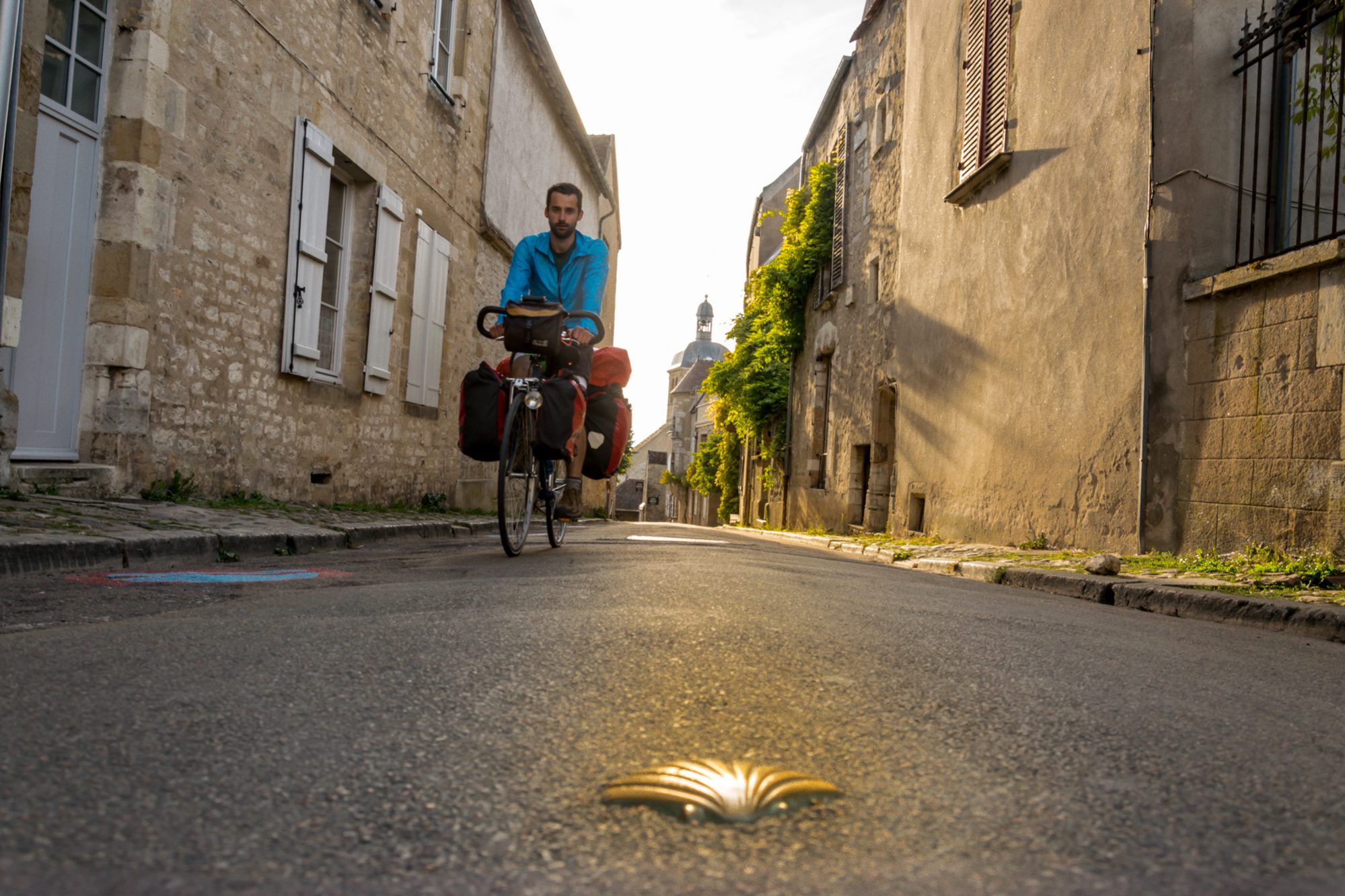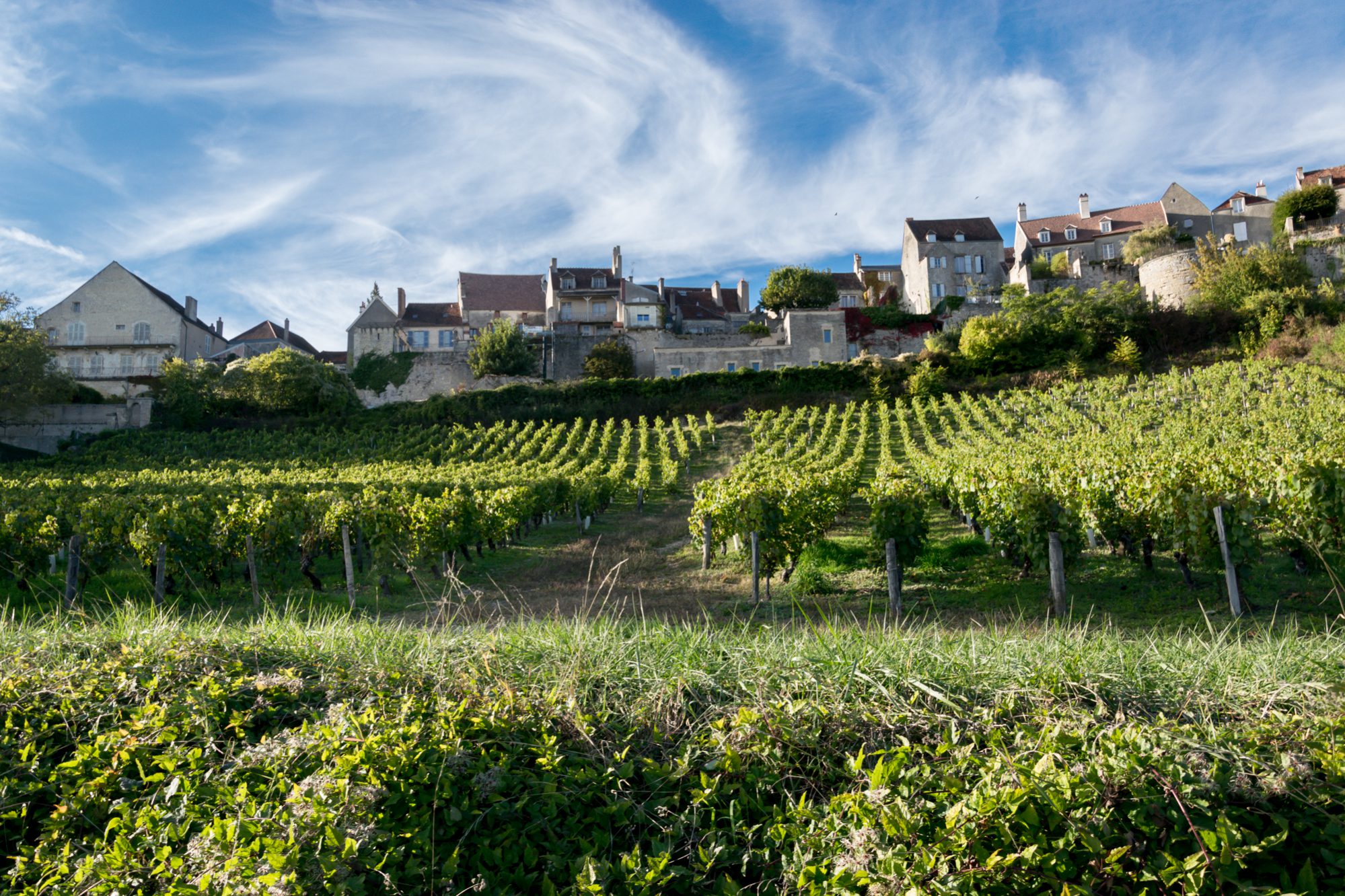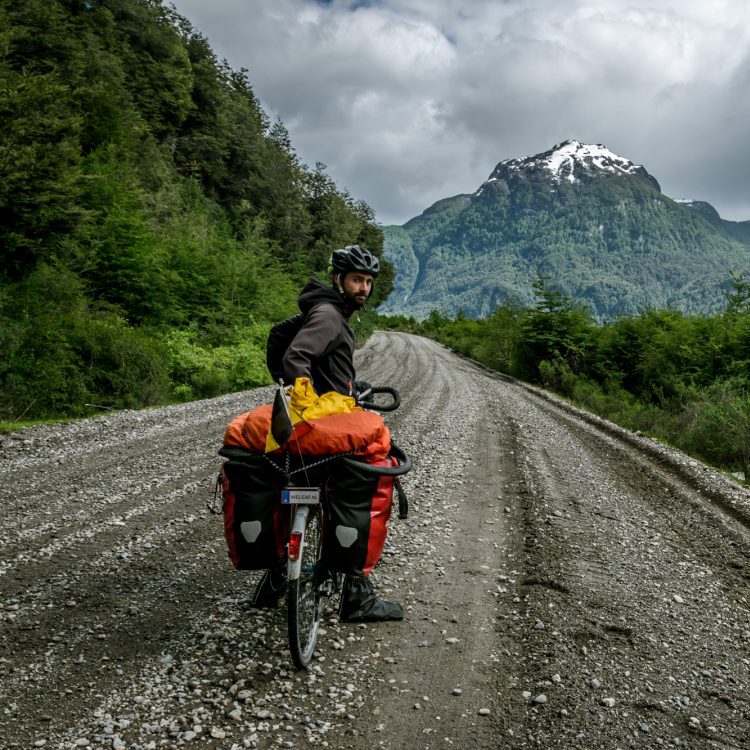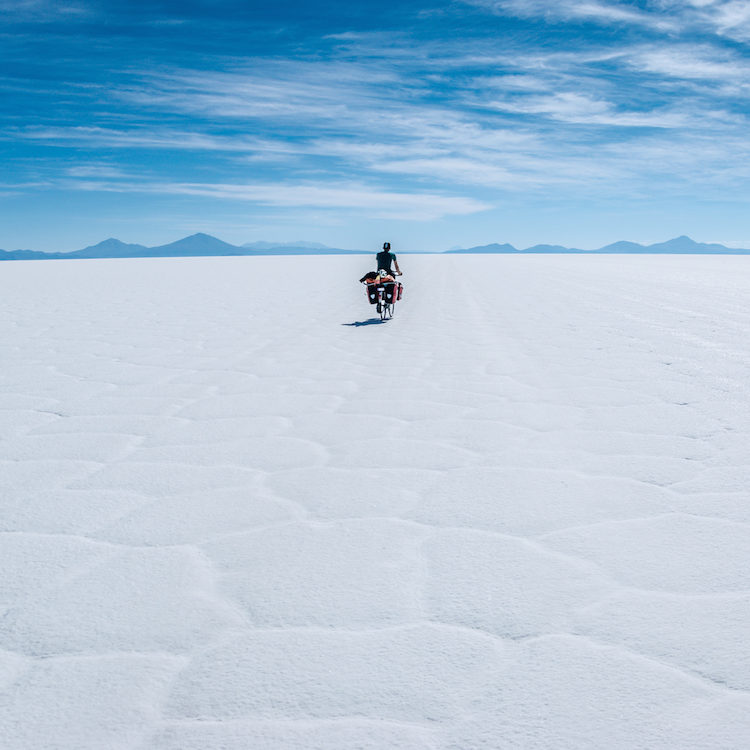
This is how we deal with aggressive dogs
June 26, 2018
Mother goose
July 20, 2018Old roads and pilgrim towns
All roads lead to Rome, although there are many that go to Santiago de Compostela. Routes leave from all over Europe to the famous pilgrim capital. In Spain, the Camino Frances is the best known and busiest route of all, but before you arrive here, there are routes in abundance. We cycled the route 'old roads and pilgrim towns' that passes through the beautiful inland of France. The route passes several old fortified towns, picturesque villages, vast vineyards and the tough hills of the Massif Central until the feet of the Pyrenees.
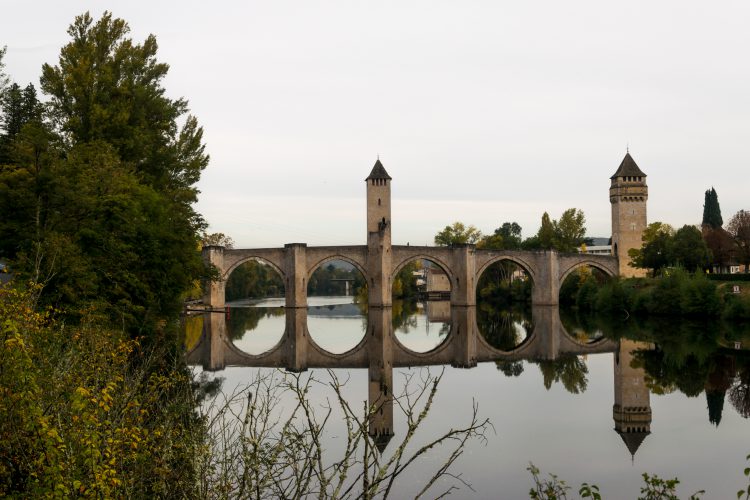
Old roads and pilgrim towns
The official route departs in Maastricht or in Aachen, but you can join at any time. We followed the route from Châlons-en-Champagne in the French Champagne-Ardenne region. We cycled from the Belgian Namur along the Maas to France and avoided the tough climbs in the Ardennes.
After Châlons-en-Champagne you quickly dive into the Burgundy region where you can cycle through the extensive vineyards. The first real pilgrim city on the route is Vezelay, a beautiful fortified town built on a hill. It is a famous pilgrim place where our pilgrimage officially began. In the morning the pilgrims receive a blessing in the great basilica Sainte-Marie-Madelaine. Pilgrims can sleep in the Center de la Madeleine, right in the historic center, next to the basilica.
After Vezelay, more ancient cities such as Nevers and La Chatre follow, after which the Central Massif is waiting for you. There, exhausting climbs await through a beautiful nature. Early in the morning frightened deers shoot away as you ride lonely over the small roads. Then the route goes south along the beautiful pilgrim towns of Rocamadour and Cahors, after which the first contours of the Pyrenees pop up near Pau.
In France there are countless small roads where you hardly encounter a few cars every day. The landscape is undulating with the occasional steep climb, especially from the Central Massif. On the way you will see more and more the famous scallops coming up that point the right way to Santiago.
Sleeping
With a pilgrim passport, a new world of overnight places opens for you, often the best places in the middle of the old center. In Spain there are gigantic pilgrims' hostels with over 100 beds, but in France there are only small hostels for a few pilgrims. Unless high season season, you will often have the house for you alone. In almost every village on the route you can get a stamp for the pelgrimage passport. Usually this is in the town hall, and if it is not, they know where you have to go. In the town hall they might have a paper with the pilgrim's houses in the following villages, including the price and contact details. Ask for it. This way you can easily plan the next day trip depending on the overnight stay you prefer. Prices in France vary between € 10 and € 15. A number of hostels work with a donation where you can decide how much you contribute. The most beautiful hostels we found in Vezelay, Nevers, Marciac and La Châtre. And the Vincent Bernard pilgrims' hostel is certainly worth a visit. A number of hostels close the doors from November because the 'tourist' pilgrim season ends.
We exchanged a night in the tent with a night in a pelgrims hostel. In October, many campsites were closed. Therefore we did a lot of wild camping which is officially not allowed. Sometimes we asked a farmer to have a stay in his garden, or asked permission to the priest to pitch the tent behind the church.

Eating
Surely every day you will make it to a village or a city with a supermarket, but during the day it is sometimes difficult to find bread in the small villages. Many of the small French villages have become deserted and do not have a shop or a bakery. We experienced this a few times with a hungry stomach, after which we always bought our bread at the first opportunity. In a larger supermarket we bought food for two to three days so that we could stop at any place in the evening without worries.
The Sundays are still very traditional in France and most shops are closed. On the bike we often have no sense of time and forgot the Sundays. Also outside the tourist season many restaurants, cafes and campsites are closed. The villages and towns look sad on a cold autumn evening, but still very adorable.
Pilgrim's Passport
The pilgrim's passport is indispensable for a pilgrimage to Santiago de Compostela. It is a special feeling to arrive at an Pelgrims hostel or a town hall and get a new stamp in your passport. Moreover, you will not get access to the pilgrim's hostels without a passport. Finally, in Santiago de Compostela, after checking the passport, you will receive a certificate that you have completed the pilgrimage.
In most large pilgrim towns like Vezelay and Rocamadour you can buy a pilgrim passport. This often costs barely € 2. In the small villages and pelgrim inns it is sometimes difficult to buy a passport, although there are a few hostels that have their own passports. We already bought our passport in the Netherlands, at pilgrimage farm Kafarnaüm in Vessem, which we passed by bike on our third day of cycling. It is one of the two authorized societies to issue the passport in the Netherlands.
More information about this route can be found on the website of Europafietsers. Note the link is in Dutch.
